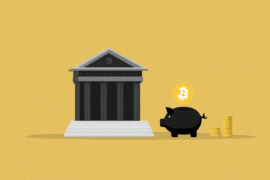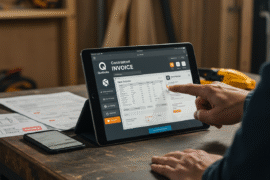This article may contain references to products or services from one or more of our advertisers or partners. We may receive compensation when you click on links to those products or services. Nonetheless, our opinions are our own.
The information presented in this article is accurate to the best of our knowledge at the time of publication. However, information is subject to change, and no guarantees are made about the continued accuracy or completeness of this content after its publication date.
- Introduction
- Crypto Trading and Investing Explained
- Differences Between Trading and Investing
- Risk and Returns Comparison
- Pros and Cons of Trading
- Pros and Cons of Investing
- How to Start Trading or Investing in Crypto
- Things to Think About When Choosing a Strategy
- Final Thoughts
- Frequently Asked Questions
- Recommended Reads
Introduction
The world of cryptocurrency changes quickly. It moves fast and has both chances and risks, so people need to be careful. As blockchain becomes a bigger part of how money works, more people want to find out how to get something good from these digital coins. There are two main ways people get into this: crypto trading and crypto investing. Each way has its own reason and goal. Trading is about making quick profits from price movements that happen often. In trading, people look to earn money in a short time. Investing, on the other hand, is based on the idea that blockchain and what it brings will grow bigger over many years. Investing is for those who feel the thing they buy in will get better as time goes on. It is important to know these differences before you pick the best plan for you. You have to think about what you want when it comes to your goals with money, the time you can give, and how much risk you can take. This article explains the important parts, upsides, downsides, and choices you face in both trading and investing in crypto.
Crypto Trading and Investing Explained
Crypto trading and investing are two different ways to work with digital things like Bitcoin, Ethereum, and other cryptocurrencies. Crypto trading means trying to make money from changes in prices that happen over a short time. Traders use market trends and technical analysis to make many trades. To do this, they need to keep a close eye on the market all the time. Crypto investing is not like quick trading. People who do this usually buy and keep crypto for a long time. They put in money and wait, hoping that blockchain networks will grow over time. When you invest in this way, you need to be patient. You also need to think ahead and look at what is important about the project, not just the price. Both strategies have risk, but they are not the same. The way you do them, how long they take, and the skills you need are different.
What Is Crypto Trading
Crypto trading is about making money from quick changes in how much digital coins are worth. People who trade use different ways to do this, such as
- Scalping: This means to make lots of trades in just a few minutes. The goal is to get money from small price changes.
- Day Trading: You open and close your trades on the same day. You do not keep trades open overnight.
- Swing Trading: You hold the trades for several days or even weeks. This way, you try to get the most out of trends that last for a bit.
The crypto market is open all day and night, every day. This means there is high liquidity and you always have access. But this also means that traders must deal with big price swings. To manage risk, people use stop-loss orders, candlestick charts, and technical indicators. To do well in crypto trading, you need to decide fast and stay steady in your approach. You also have to be ready to act when the market changes right away.
What Is Crypto Investing
Crypto investing is about keeping things like digital coins or tokens. The hope is that over time, their value will go up. Many investors go with plans like
- HODLing (Holding On for Dear Life)
- Dollar-Cost Averaging
- Value or Growth Investing
Investors look at the basic parts of blockchain projects, like the work teams, the tools they use, and how people use them in real life. With this way, you do not need to watch the market all the time. Most people say this is a lower-risk choice than trading often. Crypto investing can give you some extra income in the long run. You can get this by staking, yield farming, or by putting your money into crypto index funds. Long-term investors try to keep their money safe and stable. They look for growth in the future as more people use blockchain in different fields.
Differences Between Trading and Investing
| Aspect | Crypto Trading | Crypto Investing |
|---|---|---|
| Time Frame | Short-term (minutes to days) | Long-term (months to years) |
| Strategies Used | Scalping, Day Trading, Arbitrage | HODLing, Dollar-Cost Averaging |
| Focus | Market Fluctuations | Fundamental Project Growth |
| Risk Exposure | High, due to price swings | Moderate, focused on long-term trends |
Voted "Best Overall Budgeting App" by Forbes and WSJ
Monarch Money helps you budget, track spending, set goals, and plan your financial future—all in one app.
Get 50% OFF your first year with code MONARCHVIP
Risk and Returns Comparison
Traders often take on more risk because they want quick returns. Prices can go up or down fast. This can give people big profits or big losses in just a few hours. Trading needs you to keep calm and make smart choices in fast-changing markets. It also needs you to have the skill to read and use market tools the right way. Investors often see digital assets as something that can hold value over time. While it may take longer to get gains, people can feel less stress and do not have to worry much about up-and-down prices in the short run. They get more peace of mind and are less likely to feel the ups and downs that come quickly. Choosing if you want to trade or invest needs you to be honest with yourself. You have to look at how much risk you can take and what you want to get from it.
Pros and Cons of Trading
Advantages
- High Liquidity: 24/7 exchanges let people get in and out at any time.
- Chance for Fast Profits: Because prices change so often, you can make big gains in a short time.
- Arbitrage Chance: Traders can use price changes on other sites to their advantage.
- Wide Token Selection: There are hundreds of tokens, so you can try many strategies.
- Skill Development: You get to learn more about market signs and how to make good choices.
Disadvantages
- High Volatility: There are a lot of price swings, so the risk can go up.
- Big Learning Curve: You have to know a lot about charts and indicators to do well in this.
- Frequent Fees: Each time you make a transaction, costs may come up and lower your gains.
- Stress and Burnout: Watching your trades all the time can make you feel tired and worn out.
- Emotional Pressure: If you lose money fast, you might feel pushed to make quick decisions without thinking.
Pros and Cons of Investing
Advantages
- Long-Term Value Growth: Digital goods on the internet may go up in price over time.
- Portfolio Diversification: Crypto can give you things that are not tied to how stocks and bonds move.
- Passive Strategies: You can get extra money by staking or with yield farming.
- Institutional Interest: More big companies using crypto helps more people feel it is real and trusted.
Disadvantages
- Price Volatility: The value of these assets can go down fast when the market is not strong.
- Limited Investor Protections: There are not many rules, so people have more chances to run into scams.
- Complexity: People new to this might find it hard to understand how blockchain works.
- Emotion-Based Decisions: If you are new, you might make trades at the wrong time because of your feelings.
How to Start Trading or Investing in Crypto
Essential Tools
- Exchange Profile: Platforms like Binance or Coinbase let you buy assets.
- Digital Wallet: Hardware or software wallets keep your crypto safe.
- Market Analysis Tools: Apps such as CoinMarketCap, TradingView, or Glassnode help you check and follow the market.
Getting Started
Step 1: Define Financial Goals
Identify goals like making money, growing your assets, or spreading out your investments. Think about how much risk you can handle and how long you plan to invest.
Step 2: Choose the Right Platform
Look at exchanges to check for their security, fees, types of assets, and if they follow the rules. Turn on two-factor authentication. Also, use trusted wallets to store your assets.
Step 3: Learn Market Analysis
- Technical Analysis: Use signs like RSI, MACD, and volume to check price moves.
- Basic Analysis: Look at whitepapers, team info, token amount, and user numbers.
Using both methods together helps people make better choices and manage risk in a good way.
Step 4: Start Small and Track Performance
Start with small amounts to lower your risk. Keep an eye on how your assets do and change your plans as your investments grow or the market changes.
Things to Think About When Choosing a Strategy
Risk Profile and Investment Horizon
People who feel okay with a lot of price changes might go for trading. Others may like the slow growth that happens with investing. Make sure their plan matches their long-term money goals.
Time and Effort Commitment
Trading needs you to be active and know about the technical side. Investing lets you step back more, but you still need to check things every now and then. Think about how much time you can really give to look after your crypto.
Final Thoughts
Choosing between crypto trading and investing comes down to your own money goals, how much time you have, and what risks you are okay with. Trading lets people try to get fast gains, but it can be more risky. It can also feel stressful. Investing is about waiting longer for growth, looking for real value, and not paying as much attention to the market all the time. Both ways can be good options in the crypto world. You need the right tools, research, and a good plan to manage risk and work towards solid returns in the digital asset field.
Frequently Asked Questions
Is it possible to both trade and invest in crypto?
Yes. Many people use a mix of ways when they trade. They put some of their money into active trading to try to get gains in a short time. At the same time, they hold on to other things for long-term growth. This helps balance risk and opens up more ways to make money over time.
How much capital is needed to begin?
Starting amounts can be between $10 and $100. This depends on the platform you use. If you are new to this, it’s good to start with money you can lose without a problem. Also, remember to think about fees when you work out what you might get back.
What are the major risks of crypto trading and investing?
Risks can be price changes that go up and down fast, rules that are not clear, no protection for the people who put in money, online threats, and people making choices when they feel upset. It is important to know about these things and to be careful. Always do your research and stay alert.
Are there tax implications in the U.S.?
Yes. Crypto trading usually leads to taxes. You may have to pay income or capital gains tax when you trade. If you keep your coins for over a year, you might get a lower tax rate. It is good to talk to a tax expert to be sure you follow the rules.

Reviewed and edited by Albert Fang.
See a typo or want to suggest an edit/revision to the content? Use the contact us form to provide feedback.
At FangWallet, we value editorial integrity and open collaboration in curating quality content for readers to enjoy. Much appreciated for the assist.
Did you like our article and find it insightful? We encourage sharing the article link with family and friends to benefit as well - better yet, sharing on social media. Thank you for the support! 🍉
Article Title: Crypto Trading vs. Investing: Which Path Is Right?
https://fangwallet.com/2025/07/12/crypto-trading-vs-investing-which-path-is-right/The FangWallet Promise
FangWallet is an editorially independent resource - founded on breaking down challenging financial concepts for anyone to understand since 2014. While we adhere to editorial integrity, note that this post may contain references to products from our partners.
The FangWallet promise is always to have your best interest in mind and be transparent and honest about the financial picture.
Become an Insider

Subscribe to get a free daily budget planner printable to help get your money on track!
Make passive money the right way. No spam.
Editorial Disclaimer: The editorial content on this page is not provided by any of the companies mentioned. The opinions expressed here are the author's alone.
The content of this website is for informational purposes only and does not represent investment advice, or an offer or solicitation to buy or sell any security, investment, or product. Investors are encouraged to do their own due diligence, and, if necessary, consult professional advising before making any investment decisions. Investing involves a high degree of risk, and financial losses may occur including the potential loss of principal.
Source Citation References:
+ Inspo
There are no additional citations or references to note for this article at this time.












































